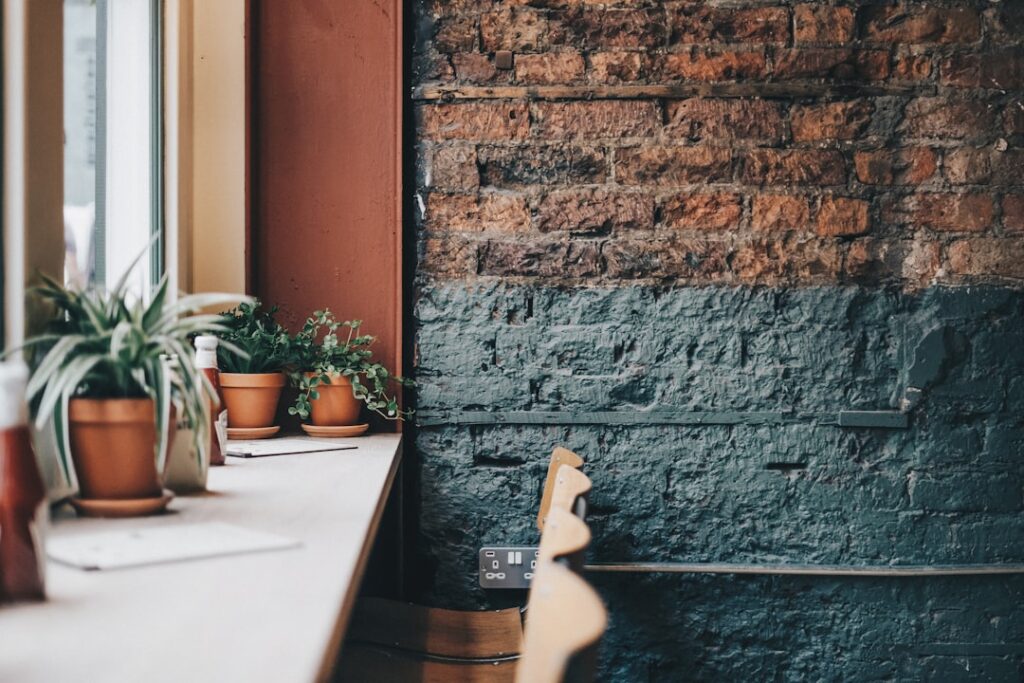The office space serves as more than just a physical location where work is conducted; it embodies the culture, values, and operational ethos of an organization. Understanding its purpose is crucial for creating an environment that fosters productivity, collaboration, and innovation. An office should reflect the nature of the work being done, whether it’s a creative agency that thrives on brainstorming sessions or a tech startup that requires quiet zones for coding and development.
The design and layout should facilitate the specific activities that employees engage in daily, ensuring that the space is not only functional but also inspiring. Moreover, the purpose of an office extends to employee well-being and satisfaction. A well-designed office can enhance morale, reduce stress, and promote a sense of belonging among employees.
This is particularly important in today’s work culture, where remote work has become prevalent. Organizations must consider how their physical spaces can attract employees back to the office by offering an environment that is not only conducive to work but also enjoyable to be in. This understanding of purpose drives decisions about layout, design, and amenities, ultimately shaping the overall employee experience.
Key Takeaways
- Understanding the purpose of the office space:
- Define the primary function and goals of the office space to guide design and layout decisions.
- Consider the needs and preferences of the individuals who will be using the space on a daily basis.
- Choosing the right color scheme for productivity and style:
- Select colors that promote focus, creativity, and a positive atmosphere.
- Incorporate the company’s branding and style while ensuring a visually appealing environment.
- Selecting ergonomic furniture for comfort and functionality:
- Prioritize comfort and support to reduce the risk of physical strain and discomfort.
- Choose furniture that is adjustable and versatile to accommodate different work styles and preferences.
- Incorporating natural light and greenery for a refreshing atmosphere:
- Maximize natural light to create a bright and inviting workspace.
- Integrate plants and greenery to improve air quality and add a touch of nature to the environment.
- Organizing storage solutions for a clutter-free environment:
- Implement efficient storage solutions to keep the space organized and free of clutter.
- Utilize a combination of storage furniture, shelving, and organizational tools to maintain a tidy workspace.
Choosing the right color scheme for productivity and style
The Psychology of Color
For instance, blue is often linked to feelings of calmness and focus, making it an ideal choice for areas that require intense concentration. On the other hand, vibrant colors like yellow can stimulate creativity and energy, making them perfect for brainstorming rooms or collaborative spaces.
Aligning Color with Brand Identity
When selecting a color scheme, it’s crucial to consider not only the psychological effects of colors but also how they align with the brand identity of the organization. A well-chosen color scheme can significantly enhance the overall style of an office, creating a sense of harmony and professionalism.
Balancing Productivity and Visual Identity
Ultimately, the right color scheme should balance productivity-enhancing qualities with an appealing visual identity that resonates with both employees and clients. By carefully selecting a color palette, organizations can create an environment that fosters creativity, innovation, and success.
Selecting ergonomic furniture for comfort and functionality

The selection of ergonomic furniture is critical in creating a workspace that prioritizes comfort and functionality. Ergonomics focuses on designing workspaces that fit the needs of the user, reducing strain and preventing injuries associated with prolonged sitting or repetitive movements. For instance, adjustable desks allow employees to alternate between sitting and standing throughout the day, promoting better posture and reducing fatigue.
Similarly, ergonomic chairs with lumbar support can help maintain spinal alignment, which is essential for long hours spent at a desk. Beyond chairs and desks, other ergonomic considerations include keyboard trays, monitor stands, and footrests. These elements contribute to a holistic approach to workplace ergonomics, ensuring that every aspect of the workspace supports employee health and productivity.
Investing in high-quality ergonomic furniture not only enhances comfort but also demonstrates a commitment to employee well-being. Organizations that prioritize ergonomics often see reduced absenteeism due to health issues and increased overall job satisfaction among their workforce.
Incorporating natural light and greenery for a refreshing atmosphere
Natural light has been shown to have numerous benefits for workplace productivity and employee well-being. Exposure to natural light helps regulate circadian rhythms, which can improve sleep quality and overall mood. Offices designed with large windows or skylights allow ample sunlight to flood the space, creating an inviting atmosphere that encourages alertness and focus.
Additionally, strategically placed mirrors can amplify natural light by reflecting it throughout the office, further enhancing brightness without relying solely on artificial lighting. Incorporating greenery into the office environment complements natural light by creating a refreshing atmosphere that promotes relaxation and creativity. Plants have been shown to improve air quality, reduce stress levels, and enhance cognitive function.
Simple additions like potted plants on desks or larger indoor trees in common areas can transform a sterile office into a vibrant ecosystem. Furthermore, biophilic design principles advocate for integrating nature into built environments, suggesting that incorporating elements like living walls or green roofs can significantly enhance employee satisfaction and productivity.
Organizing storage solutions for a clutter-free environment
A cluttered workspace can lead to distractions and decreased productivity. Therefore, implementing effective storage solutions is essential for maintaining an organized office environment. This involves not only providing adequate storage options but also ensuring that they are easily accessible and user-friendly.
For instance, utilizing modular shelving systems allows for customization based on individual needs while maximizing vertical space. Additionally, incorporating filing cabinets with labeled folders can streamline document management, making it easier for employees to locate important materials quickly. Digital storage solutions also play a crucial role in decluttering physical spaces.
Encouraging employees to adopt paperless practices through cloud storage systems can significantly reduce the amount of physical paperwork in the office. Tools like project management software can help teams organize tasks and documents digitally, minimizing reliance on printed materials. By fostering a culture of organization—both physically and digitally—companies can create an environment that promotes focus and efficiency.
Adding personal touches and artwork for inspiration

The Power of Personalization
For example, an employee might display travel photos or artwork that resonates with their personal interests, creating a more inviting atmosphere. Artwork plays a vital role in inspiring creativity within the workplace as well. Thoughtfully curated pieces can stimulate conversation and provoke thought among employees.
Fostering Community Engagement
Companies might consider commissioning local artists or showcasing employee-created art to foster community engagement while supporting local talent. This approach not only promotes creativity but also helps to build a sense of community within the office.
Enhancing the Office Ambiance
Additionally, incorporating motivational quotes or murals can serve as daily reminders of the organization’s values and goals, further enhancing the overall ambiance of the office. By incorporating these personal touches, companies can create a workspace that inspires creativity, motivation, and job satisfaction.
Utilizing technology for a modern and efficient workspace
In today’s fast-paced work environment, technology is integral to creating a modern workspace that enhances efficiency and collaboration. The integration of smart technology—such as automated lighting systems or climate control—can optimize energy use while providing comfort for employees. Furthermore, equipping meeting rooms with advanced audiovisual equipment facilitates seamless communication during presentations or remote meetings, bridging gaps between in-office and remote workers.
Collaboration tools like video conferencing software or project management applications are essential for fostering teamwork in hybrid work environments. These technologies enable real-time communication and collaboration regardless of physical location, ensuring that all team members remain connected and engaged. By investing in cutting-edge technology, organizations not only streamline operations but also demonstrate their commitment to innovation—a key factor in attracting top talent in competitive industries.
Creating designated areas for different tasks and activities
A well-structured office layout should include designated areas tailored to specific tasks and activities. This zoning approach allows employees to choose environments that best suit their work styles—whether they require quiet spaces for focused tasks or collaborative areas for brainstorming sessions. For instance, creating quiet zones equipped with soundproofing materials can provide employees with a retreat from distractions when they need to concentrate deeply on complex projects.
Conversely, open collaboration spaces encourage teamwork and idea-sharing among employees. These areas might feature comfortable seating arrangements or whiteboards for brainstorming sessions, fostering an atmosphere of creativity and innovation. By thoughtfully designing these distinct zones within the office, organizations can cater to diverse working preferences while promoting flexibility—a crucial aspect of modern work culture.
Incorporating soundproofing and acoustics for a peaceful environment
Acoustics play a significant role in shaping the overall experience within an office space. Excessive noise can lead to distractions and decreased productivity; therefore, incorporating soundproofing measures is essential for creating a peaceful environment conducive to focused work. This may involve using acoustic panels on walls or ceilings to absorb sound waves or installing carpets that reduce noise levels from foot traffic.
Additionally, thoughtful layout design can minimize noise disruptions by strategically placing quieter work areas away from high-traffic zones such as break rooms or meeting spaces. Implementing sound masking systems—background noise designed to cover up distracting sounds—can further enhance acoustic comfort within open-plan offices. By prioritizing sound management in office design, organizations can create environments where employees feel comfortable concentrating on their tasks without unnecessary interruptions.
Considering the impact of layout and flow on productivity
The layout of an office significantly influences workflow efficiency and employee interactions. A well-planned layout should facilitate smooth movement throughout the space while promoting collaboration among team members. For instance, placing communal areas—such as kitchens or lounges—near workstations encourages informal interactions among employees, fostering camaraderie and teamwork.
Moreover, considering flow involves analyzing how employees navigate through the office during their daily routines. Open layouts may promote collaboration but can also lead to distractions if not designed thoughtfully. Incorporating pathways that guide movement while providing quiet zones for focused work ensures that employees can transition seamlessly between collaborative discussions and individual tasks without disruption.
Maintaining and updating the office space for continued productivity and style
An office space requires ongoing maintenance and periodic updates to remain functional and stylish over time. Regular assessments of furniture condition, technology functionality, and overall aesthetics are essential for identifying areas needing improvement or replacement. For instance, worn-out chairs may need replacing to ensure continued ergonomic support for employees.
Additionally, staying attuned to evolving workplace trends is crucial for maintaining relevance in design choices. As remote work becomes more prevalent, organizations may need to adapt their spaces accordingly—perhaps by creating more flexible workstations or incorporating technology that supports hybrid collaboration models. By committing to regular maintenance and updates, companies can ensure their office spaces continue to inspire productivity while reflecting contemporary design sensibilities.
If you are looking to create a stylish and functional office space, you may want to consider incorporating a contemporary executive desk. This piece of furniture can add a touch of sophistication to your workspace while also providing ample storage and workspace. To complement your executive desk, you may also want to consider adding a stylish sofa from Dubai to create a comfortable and inviting seating area for clients or colleagues. For tips on how to layout your workstation for maximum productivity, check out this article here.


